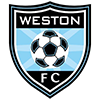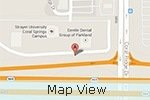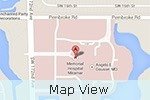Labral and SLAP Tears
Shoulder Labral Tear
The shoulder joint is a "ball and socket" joint that enables the smooth gliding and thereby the movements of arms. However it is inherently unstable because of the shallow socket. A soft rim of cartilage, the labrum lines the socket and deepens it so that it accommodates the head of the upper arm bone better.
Causes
Traumatic injury to the shoulder or overuse of shoulder (throwing, weightlifting) may cause labral tear. In addition ageing may weaken the labrum leading to injury.
Symptoms
Shoulder labral tear injury may cause symptoms such as pain, catching or locking sensation, decreased range of motion and joint instability.
Diagnosis
Shoulder labral tear is often diagnosed with symptoms, history, physical examination and radiological techniques. Magnetic resonance arthroscopy may be more appropriate for diagnosing shoulder labral tear.
Conservative Treatment Options
Your doctor may start with conservative approaches such as prescribing anti-inflammatory medications and advice rest to relieve symptoms until diagnostic scans are done. Rehabilitation exercises may be recommended to strengthen rotator cuff muscles.
Surgery
If the symptoms do not resolve with these conservative measures, your doctor may recommend arthroscopic surgery. During arthroscopic surgery, your surgeon examines the labrum and the biceps tendon. If the damage is confined to the labrum without involving the tendon, then the torn flap of the labrum will be removed. In cases where the tendon is also involved or if there is detachment of the tendon, absorbable wires or sutures will be used to repair and reattach the tendon. After the surgery, you will be given a shoulder sling to wear for 3-4 weeks. You will be advised motion and flexibility exercises after the sling is removed. These exercises increase the range of motion and flexibility of shoulder joint.
SLAP Tear
The shoulder joint is a ball and socket joint. A ‘ball’ at the top of the upper arm bone (the humerus) fits neatly into a ‘socket’, called the glenoid, which is part of the shoulder blade (scapula). The term SLAP (superior –labrum anterior-posterior) lesion or SLAP tear refers to an injury of the superior labrum of the shoulder. The labrum is a ring of fibrous cartilage surrounding the glenoid for stabilization of the shoulder joint. The biceps tendon attaches inside the shoulder joint at the superior labrum of the shoulder joint. The biceps tendon is a long cord-like structure which attaches the biceps muscle to the shoulder and helps to stabilize the joint.
Causes
The most common causes include falling on an outstretched arm, repetitive overhead actions such as throwing, and lifting a heavy object. Overhead and contact sports may put you at a greater risk of developing SLAP tears.
Symptoms
The most common symptom is pain at the top of the shoulder joint. In addition, catching sensation and pain most often with activities such as throwing may also occur.
Diagnosis
Diagnosis is made based on the symptoms and physical examination. A regular MRI scan may not show up a SLAP tear and therefore an MRI with a contrast dye injected into the shoulder, is ordered. The contrast dye helps to highlight SLAP tears.
Treatment
Your doctor may recommend anti-inflammatory medications to control pain. In athletes who want to continue their sports, arthroscopic surgery of the shoulder may be recommended. Depending on the severity of the lesion, SLAP tears may simply require debridement or some may need to be repaired. A SLAP repair can be done using arthroscopic techniques that require only two or three small incisions.
Regular exercises that make the shoulder muscles strong should be done. Adequate warm-up exercises before activities and avoiding high contact sports can help prevent injuries that cause instability.
-
Personalized Physical Therapy Puts Bryant Back on the Court
Bryant could hear the whistles blowing as he walked by the gymnasium.
View more -
No off-season for sports injuries
As a new season of school sports and youth leagues gets underway,
View more -
Student Athletes Benefit from Individualized Treatment at U18 Sports Medicine
Becoming involved in a sport is one of the healthiest things that a child can do.
View more -
For young athletes, injuries need special care
More programs are using procedures and surgical techniques tailored for kids.
View more -
Dr Frank u18 Tip 1
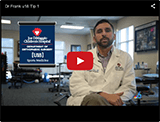 View more
View more -
Segment U18 Tip with Dr Frank 1
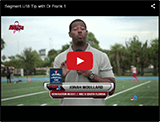 View more
View more -
Dr. Frank’s 2010 WQAM high school football game halftime interviews
View more




 Menu
Menu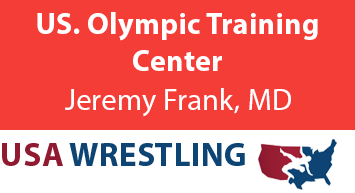






 In The News
In The News Hollywood Office
Hollywood Office

![[U18] Sports Medicine](https://www.kidbones.net/wp-content/themes/ypo-theme/images/u18-sports-medicine-performing-arts-logo.png)
